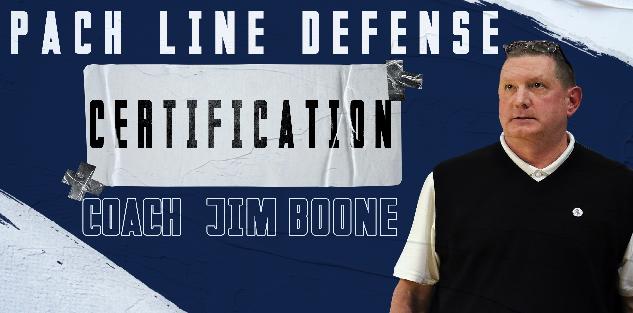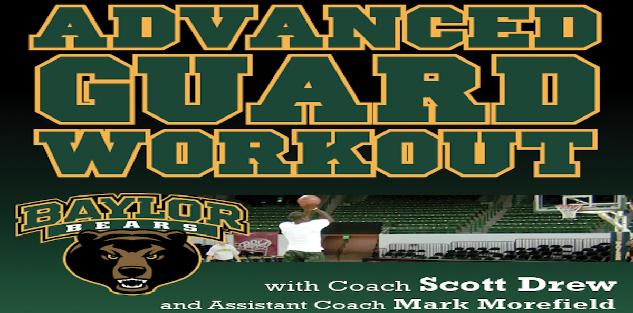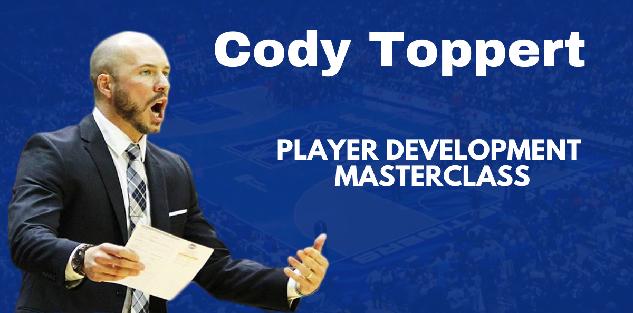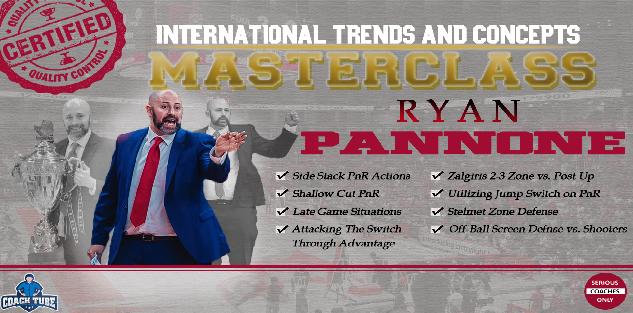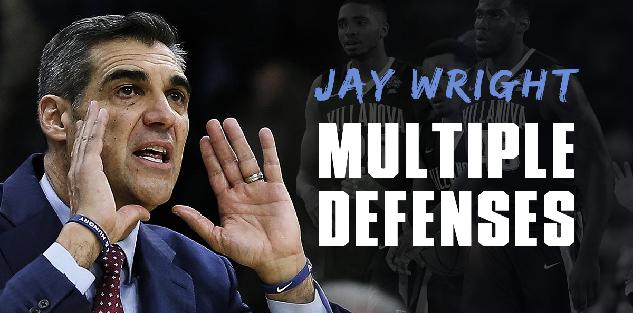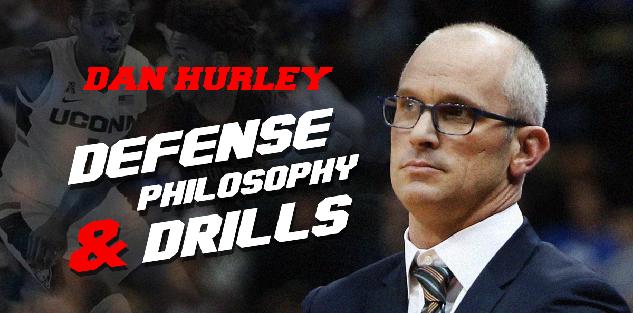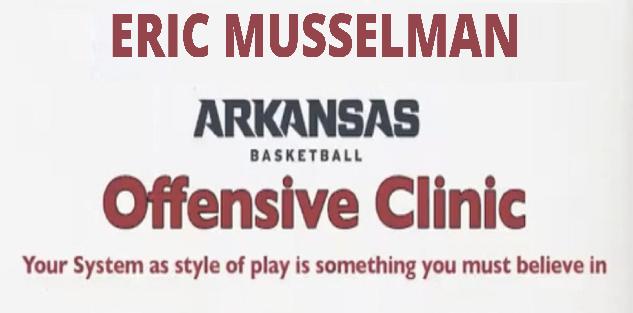Featured courses
- Two Great Game Situational Workouts For the Basketball Offseason by Grant Young
- Two Reads Basketball Players Must Understand Before Executing the Ball-Screen by Grant Young
- Two of LSU Coach Kim Mulkey’s Game-Winning Inbounds Plays by Grant Young
- Three Effective Early-Season Defensive Basketball Drills by Grant Young
- Four Essential Tips For Basketball’s 1-3-1 Zone Defense by Grant Young
- Four Zone Defense Drills to Strengthen Your Team by Grant Young
- How to Beat the Three Most Common Pick and Roll Coverages by Grant Young
- Two Drills to Improve Shooting at the Start of the Basketball Season by Grant Young
- Core Basketball Principles That Dallas Mavericks Coach Sean Sweeney Teaches by Grant Young
- Three Competitive Shooting Drills For Your Basketball Team by Grant Young
- How To Teach The ‘I’ Generation of Basketball Players by Grant Young
- Three Elite Drills to Begin a Basketball Practice With by Grant Young
- How to Build a Championship-Winning Basketball Team Culture by Grant Young
- Two of Texas Women’s Basketball Coach Vic Schaefer’s Tips For Team Culture by Grant Young
- Atlanta Dream WNBA Coach Brandi Poole’s Four Sets for Secondary Offense by Grant Young
- NC State Basketball Coach Brett Nelson’s 4 Crucial Point Guard Qualities by Grant Young
- Kentucky Coach Mark Pope’s Five Guard Rules For Offense by Grant Young
- McNeese State Basketball Coach Will Wade’s 4 Core Pillars by Grant Young
- 4 Tips To Instantly Improve Your Free Throw Shooting by Tyler Linderman
- Assemble a Championship-Caliber Basketball Rotation by Brandon Ogle
- Two of UConn Coach Dan Hurley’s Key Defensive Drills by Grant Young
- Four Post Moves All Basketball Forwards Should Have In Their Bag by Grant Young
- Four of Baylor Coach Nicki Collen’s Midseason Pick and Roll Adjustments by Grant Young
- WNBA Legend Sue Bird’s Two Tips For Attacking on Offense by Grant Young
- Houston Coach Kelvin Sampson’s Three Keys for Building a Basketball Program by Grant Young
- Two of Tom Izzo’s Top Michigan State Defensive Drills by Grant Young
- Four of Olympic Gold Medalist Coach Mechelle Freeman’s Relay Race Strategies by Grant Young
- Three Key Strategies Will Wade Uses to Build a Dominant Team by William Markey
- Five UConn Huskies Men’s Basketball Plays That You Can Use by Grant Young
- Three Tips for Maintaining Team Culture at the End of a Basketball Season by Grant Young
- Three Dribble Drive Motion Drills to Teach Your Basketball Team by Grant Young
- Three Dribbling Drills For Non-Primary Ball Handlers by Grant Young
- Four Advanced Ball Handling Drills For Basketball Guards by Grant Young
- Three Tips to Sharpen Your Post Player’s Footwork in Basketball by Grant Young
- These Three Pick and Roll Drills Are Crucial For Any Ball Screen Offense by Grant Young
- Three Closeout Drills to Improve Basketball Shooting Defense by Grant Young
- Three Tips to Perfect the Packline Defense in Basketball by Grant Young
- Four Keys to Executing the Read and React Offense in Basketball by Grant Young
- Three Tips to Develop Elite Basketball Shooters by Grant Young
- Three Crucial Keys to Executing the 5 Out Offense in Basketball by Grant Young
- These Three Offensive Sets Will Help You Beat Any Zone Defense by Grant Young
- Three Transition Basketball Drills To Play With More Pace by Grant Young
- Three 5 Out Offense Drills Any Basketball Coach Can Use by Grant Young
- Four Vital Techniques for a Motion Offense in Basketball by Grant Young
- Three Baseline Inbounds Plays To Win Your Basketball Team Games by Grant Young
- Four Drills For Sharpening the European Ball Screen Offense by Grant Young
- Three Positioning Tricks For a Basketball Zone Offense by Grant Young
- Three Rules to Perfecting Basketball's Lock Left Defensive System by Grant Young
- UCLA WBB Coach Cori Close’s Two Keys to Winning the Mental Game by Grant Young
- Four of Alabama Coach Nate Oats’ Favorite Basketball Drills by Grant Young
- Three Ways To Turn Transition Offense in Basketball Into Points by Grant Young
- Three Drills to Master Basketball's Pack Line Defense by Grant Young
- Three Transition Defense Drills to Halt Fast Breaks by Grant Young
- Four Offensive Rebounding Drills to Win Second Possessions by Grant Young
- 4 Defensive Technique Drills from Boston Celtics Assistant Coach Brandon Bailey by Marek Hulva
- 5 Drills to Improve Ball Handling by Tyler Linderman
- 13 FUNNY BASKETBALL GIFS by Alex
- BASKETBALL SPEED AND AGILITY: 8 QUESTIONS FOR COACHTUBE EXPERT RICH STONER by Jaycob Ammerman
- Defensive Strategies for Basketball by Ryan Brennan
- 4 Keys To Turning Your Program Into Championship Contender By Dallas Mavericks Coach Sean Sweeney by Marek Hulva
- 5 Components to Creating a Winning Basketball Program by Justin Tran
- Guide to Becoming a Lethal Scorer in Basketball by Justin Tran
- Zone Defense In the NBA Eastern Conference Finals by James Locke
- Mastering Court Mobility: Tips for Effective Movement in Basketball by Justin Tran
- 5 Basketball Shooting Drills: How to Develop a Sharpshooter by James Locke
- 6 Points of Emphasis for a Successful 5 Out Offense by Jaycob Ammerman
- Effective and Efficient Methods to Practice During the Basketball Season by Justin Tran
- Three Great Passing Drills From a Basketball Coaching Legend by Grant Young
- 7 Principles For Perfecting the Princeton Offense in Basketball by Grant Young
- How to Replicate A Modern NBA Offense by Grant Young
- Three Great Two-Ball Dribbling Drills For Basketball Development by Grant Young
- Two Rebounding Drills to Win Your Basketball Team Championships by Grant Young
- How to Improve Your Basketball Team’s Defense With the Shell Drill by Grant Young
- How Baylor Basketball’s Scott Drew Develops Elite Guard Play by Grant Young
- Off-Ball Movement Tips and Strategies: Lessons From the NBA Finals by James Locke
- Player Development: Scott Drew’s Tips for Producing NBA Guards by James Locke
- How to Execute a Spread Offense in Basketball by Grant Young
- Four Quality Quotes From Four Final Four Coaches by Grant Young
- A Guide to the Pack Line Defense by Alex Martinez
- 3 Defensive Build Up Drills to Improve Team Basketball Defense by Grant Young
- Battle of Two Great Coaches: Best Plays from the NBA Finals Contenders by Justin Tran
- 10 Creative Ways Athletic Programs Can Use a Video Board to Raise Money by Coach Williams
- How to Use 3 on 3 to Improve Your Basketball Team by Grant Young
- How to Defend the Pick and Roll by Grant Young
- Mastering Basketball Defense: Techniques, Drills, and Strategies for Success by Justin Tran
- Three Tips From The Coach Who Developed Giannis Antetokoumnpo by Grant Young
- 2023 NBA Draft: Skills and Technique from Top Prospects by Justin Tran
- From College to the Pros: Transitioning the Dribble Drive Offense by Justin Tran
- Positionless Basketball: Redefining Roles on the Court by Justin Tran
- Revolutionize Your Offense: Proven Concepts to Elevate Your Basketball Game by Justin Tran
- 5 Essential Fastbreak Drills Every Basketball Coach Should Know by James Locke
- How to Run a Circle Offense in Basketball by Grant Young
- Game-Changing Strategies: ATO Plays in the EuroLeague and Olympics by Justin Tran
- How to Stand Out at Basketball Tryouts by Grant Young
- How to Improve Your Basketball Team’s Transition Defense by Grant Young
- Indiana Fever GM Lin Dunn’s Two Keys For Women’s Basketball Coaches by Grant Young
- Strength Training Strategies Every Basketball Player Should Have by Grant Young
- A WNBA Basketball Coach’s Four Priorities In Transition Defense by Grant Young
- Three Adjustments to Make When Your Basketball Offense Isn’t Working by Grant Young
- Three Pillars to Applying Defensive Pressure on the Basketball Court by Grant Young

Four Keys to Executing the Read and React Offense in Basketball
- By Grant Young
The read and react offense has become a preferred style for modern basketball coaches due to the flexibility and versatility it provides.
The read and react offense is effective because it is versatile and allows players to make quick decisions based on the defense's movements. Instead of relying on set plays, the read and react offense emphasizes players reading the defense and reacting accordingly. This can create confusion for the defense and open up scoring opportunities.
Another massive benefit to the read and react offense is that it promotes constant player movement, which can lead to open shots and scoring chances. Not only will this help your team, but it will also enable your players to develop their individual offensive skills while learning how to incorporate those skills into a team atmosphere. This will be crucial for the player’s continued progress within basketball — which they’ll owe to you the offense you elected to run.
However, despite its many benefits, the read and react offense presents distinct coaching challenges. Unlike traditional offenses that rely on set plays, the read and react offense demands that players make split-second decisions based on the defense's movements. This means that players need to be able to read the defense, anticipate their teammates' actions, and make the right decisions on the fly.
Since the offense is based on players' reactions rather than predetermined actions, it can be more difficult to teach and implement compared to more structured offensive systems.
These reasons point to why it’s a massive benefit for coaches to have a few core pillars they can rely on when instituting the read and react offense into their own scheme. This is why we’ve pulled some of the best tips about executing the read and react offense from three top-tier coaches, which will prove vital in maximizing this offense’s effectiveness.
Jody Wynn - Read and React Offense
Jody Wynn spent 12 seasons as the Head Women’s Basketball Coach at the University of Washington. Under Wynn's direction, the Huskies posted an overall record of 38-75 at UW and an overall record of 175-194. She joined Washington after eight seasons as the head coach at Long Beach State, where she Wynn compiled a 137-119 record, reached the WNIT three times, and had an NCAA tournament berth in her final season.
In her ‘Jody Wynn- Read and React Offense’ course, Coach Wynn explains how employing circle movement is a key component to ensuring the read and react offense remains efficient.
What she means by this is that when the ball moves to the right, the entire offense should be moving to the right. And vice versa when the ball is moving to the left.
The goal here is to keep 15-18 foot spacing between each player at all times because that’s an optimal distance for giving players space to execute individual offense while also having players close enough to pass to or institute a two-man game with.
Another vital component to this circle movement in the read and react is that the player on the opposite corner of wherever the ball is should be trying to cut along the baseline to make themselves available for a potential easy score in the post. If not, they can continue heading to the opposite corner which completes the circular movement.
David Moore - Read and React Scoring
David Moore (or Coach D-Mo) played college basketball at Hawaii Pacific University and now trains basketball athletes of all ages/levels putting them through what he calls, “Transformation Training” as part of Team Esface Basketball.
Coach D-Mo’s ‘Read and React Scoring’ course has a drill he uses to develop a player’s read and react scoring capabilities that he calls the combo guard reacting scoring series.
This drill will start with a player having their hands behind their back until a coach drops a ball in front of them. From there, the player will need to react by catching the ball out of the air and executing a sweep action as his feet are getting set for a shot.
At that point, the player (who is positioned a bit outside of the elbow) will either dribble and drive to the basket for a layup or take one dribble and shoot a midrange pullup jumper, depending on how the coach is guarding them.
Because this drill starts with the player making an instinctive, reactionary play by grabbing the ball out of the air, the hope is this trains the player to then work off their reactions and make the right offensive move afterward. This drill is effective because the success of a read and react offense hinges on a player using their reactions and basketball instincts.
Rick Torbett - Read and React Offense Stages Not Ages
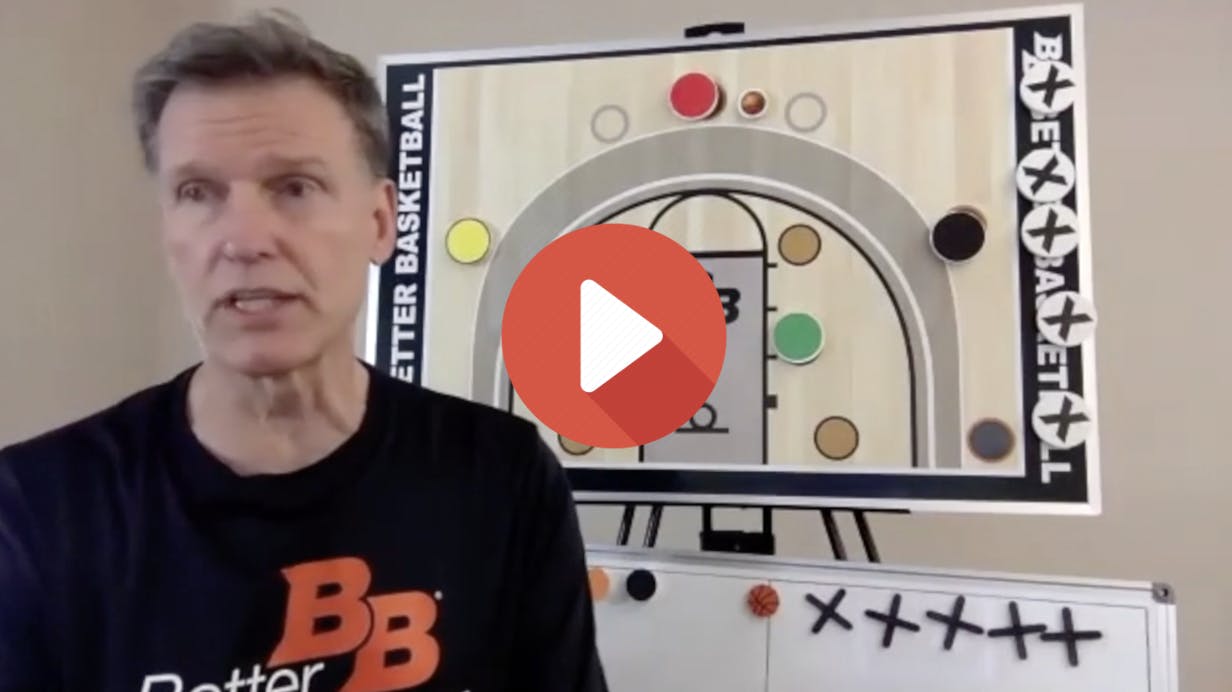
Rick Torbett is the founder of Better Basketball and the creator of the Read and React offense, In 2001, he created a service that provided DVD and now a streaming service that consists of training and instructing basketball players and coaches.
Coach Torbett’s ‘Read and React Offense Stages Not Ages’ course explains that a major part of running a successful read and react offense is that players should stick to spots on the court where they’re finding success.
If a particular guard is seeing success on the man guarding them in the post, then they should be finding ways to get into the post within the flow of the offense. But once they get there, they should try to post their player up and execute offense that way.
A beautiful part of the read and react offense is its flexibility, and how it can be molded to whatever advantages arise for an offense during any given game.

